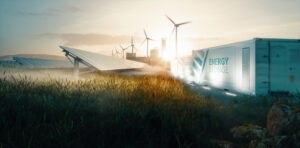
Renewable Energy Trends Fueling a Sustainable Future
Innovation is accelerating, and many trends in renewable energy are changing the way we generate, store, and utilize electricity. Under these, the development of flexible non-network solutions, such as portable solar generators, clearly demonstrates that renewable energy is not only more environmentally friendly but also broader, portable, and adaptable to everyone.
The solar system in 2025 is at a turning point, one that goes beyond simple reductions in emissions. The pathways of fossil fuels and clean, renewable energy are essential for resistance, independence, and long-term economic health.
The Development of Solar Technology
Solar energy remains one of the mainstays of global energy evolution, and advances in solar power technology over the past decade have reduced costs and increased efficiency.
Recent progress in solar technology involves building integrated solar or BIPVs, which are solar collectors installed in windows and facades. Perovskite solar cells are a new type of material with low production costs and high efficiency. The Bonifacia repanels are exposed to sunlight from both sides to improve energy performance.
Portable Power and Off-Grid Energy Independence
According to the information, in addition to Grid-Connected Devices, consumers are increasingly looking for long-distance living, travel, and disaster prevention. Eco-friendly, quiet Portable solar power generators combine solar power with lithium-ion battery storage to deliver without fuel, steam, or noise.
Comprehensive Guidelines for Operating a Portable Solar Generator
- Place the solar panels in the sun after they have been unpacked.
- Connect the panels to the portable generator’s input.
- The battery may take 5 to 10 hours to fully charge, depending on the strength of the sun and the panel’s efficiency.
- Attach your devices or appliances to the AC or USB outlets.
- Utilize the generator’s digital display to monitor power usage.
From camping to off-grid cabins and RVs to simply acting as a backup during blackouts, this is one of the most practical renewable tools for everyday people.
The Offshore and Domestic Development of Wind Energy:
Wind power is still expanding globally and isn’t just because of big turbine farms thanks to innovations like VAWTs (vertical-axis wind turbines), which are made for rooftop and urban use, AI-driven predictive maintenance that boosts turbine efficiency and decreases downtime, and the increasing number of microturbines placed in parking lots, buildings, and industrial areas as cities adopt urban wind systems.
Energy Storage: Treatment of Uncertainty
One of the primary challenges with renewable energy is its reliability. What happens when the wind stops blowing or the sun sets? The answer lies in energy storage technology.
The following are some trends in storage:
- Solid-state batteries for higher energy density and safety
- Flow batteries for longer-duration grid storage
- Electric vehicles may be able to return electricity to the grid through vehicle-to-grid (V2G) technology.
- Better storage has made renewable energy a reliable, round-the-clock source.
Vitality Independent Living and Microgrids
Microgrids are local energy systems that operate independently of larger networks.
In cultures that experience failures and remote areas without central infrastructure, these are becoming increasingly essential. They rely on solar, wind, and battery power to maintain critical services in the event of an accident.
Consumers now have direct power over energy, not only utilities, according to a growing movement known as decentralization.
FAQs Regarding Trends in Renewable Energy:
- What are the most important trends in renewable energy at this time?
Solar remains an industry leader, but energy storage and portable solar energy are expanding rapidly due to its reliability and versatility.
- What is a portable solar generator and gas operator?
Perfect for indoor or international use. Because they are quiet, clean and do not operate the fuel. In the long run, they are more economical and sustainable.
- Is it possible to use solar energy if there is a power outage?
If you have a portable generator or battery memory, you can operate the device in the event of a network failure.
4.Where is the most beneficial place to use wind power?
The best places for wind include large plains, coastal areas and offshore areas. New floating turbines can be installed in deeper oceans.
- How much does it cost to build a renewable energy system?
Initial costs can be important, but most systems ultimately pay through tax credits, discounts, and lower energy bills.
- How can I equip my home with renewable energy?
Think of a full house solution after starting modestly with solar energy, sunlight or electric generators for an emergency.
- What is the lifespan of solar power panels?
With little maintenance, most screens last between 25 and 30 years; however, depending on usage, batteries may need to be replaced after 10 to 15 years.
- Can I drive my entire house to a portable solar generator?
Most units are designed to perform basic tasks, such as charging phones, powering lights, and operating small appliances. For use throughout the entire house, look for high-capacity versions or consider a whole solar installation.
To Conclude:
Renewable energy is more than just a catchphrase. It is a genuine and increasing force that affects the direction of history. Innovation has made the transition from portable to solar energy more feasible and more economical. Solar remains an industry leader, but energy storage and portable solar power generators are expanding rapidly due to their reliability and versatility.